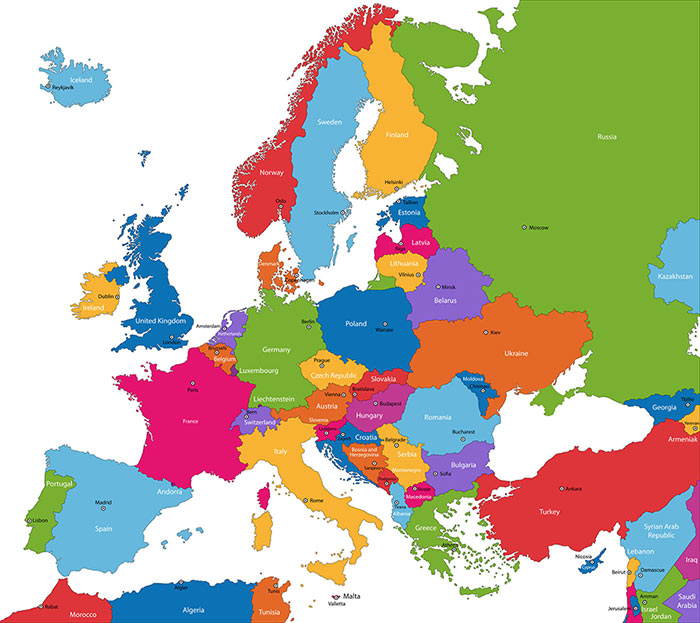New China-Ukraine Direct Train Route Indicative Of Europe’s Changing Geopolitical Dynamics
Belarus & Lithuania Create An Opening For Ukraine But Practical Difficulties Remain
Earlier this year, President Xi Jinping of China, and Ukraine’s Volodymyr Zelensky discussed strengthening infrastructure connectivity and signed off an agreement to do so. Zelensky stated that Ukraine could become a “bridge to Europe” for Chinese investment. That has now been partially realized with the first direct train from China to Ukraine via Mongolia and Russia arriving in June and the first Ukraine export train arriving in China on October 7.
China and Ukraine have incentives to improving infrastructure ties and promoting China-EU connectivity through the country. China needs an alternative route to Belarus, given the recent political problems and EU sanctions imposed on Minsk, prompting Chinese suppliers to find an alternative route for the northern corridor of the Belt and Road Initiative (BRI) and avoiding the Belarus leg, which leads through to Poland and Lithuania. The Belarussian President Lukashenko has threatened to close its borders with the EU, while EU sanctions have also raised concerns about the on-going viability of the country as a transit route. A state of emergency has recently been declared on the Belarus / Polish border due to illegal migrant issues, causing lengthy customs procedures, security checks and the need to meet different rail gauge standards. These have all caused transshipment delays.
The Lithuania route also has problems for China. The country has exited the CEEC ’17+1′ Central and East Europe-China platform and has stated its intent to open a trade representative office in Taiwan, prompting China to recall its ambassador and suspending rail freight services between the two countries.
As a result of these situations, China has re-routed the northern rail corridor to the EU through Ukraine, which also acts as an access transshipment to Central and Eastern Europe. The situation also benefits Ukraine as it promotes its own connectivity with the EU and provides an alternative route for transshipment via Russia, which has been embroiled in a de facto civil war to Ukrainian east. It also boosts the Ukrainian economy by providing income through transit fees and services.

However, potential instability problems still loom large. Ukrainian policies towards China have been erratic, creating challenges for long-term relations between the two countries. Strained relations between Russia and Ukraine can also create obstacles – the Russian government suspended rail transit between Ukraine to Central Asia in 2016, cauterizing part of the Ukraine’s transit benefits. The Ukraine is also keen to improve relations with the EU, which regards China’s Belt and Road Initiative as a threat and creates a range of problems for Ukraine in managing its relations with China that could result in pressure from EU to abandon Chinese transshipment.
Ukraine also suffers from inadequate and outdated infrastructure, hindering the country from utilizing its geographical advantage. The country needs investment to develop its railway system and capabilities yet given the EU’s position China may see this as a risky proposition: it will not want to build Ukrainian infrastructure only to see the country turn to the EU. The Ukraine has stated intent to join the EU and currently has trade agreements in place, but is not anywhere near membership, and is unlikely to achieve this given Russia’s disapproval. Ukraine is also not a member of the Eurasian Economic Union (EAEU) which means that trains spend much more time at the Russian border than Belarus (which is a member) and have instead to go through different bureaucratic procedures.
The Ukrainian route therefore while of interest is unlikely to be expanded as the country falls between a rock and a hard place – in choosing to ally itself with the EU it has alienated Russia, and consequently almost permanently damaged its longer-term outlook. What is of interest is the planning and strategizing of routes throughout Eurasia as geopolitics change – meaning the Belt and Road Initiative and supply chain routes between China and Europe are constantly being studied for the next best available option when problems arise.
This article has been adapted and expanded from an article by Yunis Sharifli on Euractiv titled “Ukraine: China’s new bridge to Europe?”. The original article can be accessed here.
Related Reading
About Us
Silk Road Briefing is written by Dezan Shira & Associates. The firm has 28 offices throughout Asia, and assists foreign investors into the region. For strategic advisory and business intelligence issues please contact the firm at silkroad@dezshira.com or visit www.dezshira.com





